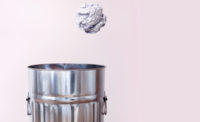Package Design To Inspire A Changing Culture










As powerful as visual communication is in modern culture and as engaging as visual brand representations can be, consumers are hungry for something deeper. Marketers who are taking their brands to a whole new level are tapping into that “something deeper.” Yes, creating packaging that resonates with consumers is challenging, but it’s necessity in order to stay relevant.
There are plenty of examples of beautiful and imaginative package design, but much of it is devoid of brand personality, message or purpose. It’s art for art’s sake. In other words, it catches the eye but it doesn’t inspire or satisfy a consumer’s deeper desires, so it ultimately fails in a marketplace burgeoning with too many choices. Then there are examples of packaging that resonate because they deliver brands that appeal to the ever-evolving consumer needs. They have a purpose, thus consumers respond to these brands in an emotional manner. A purpose imparts meaning and relevance, thereby giving brands value in the eyes of consumers. Everything else, while visually beautiful, is superficial and fails to make the cut.
Know your brand’s purpose
A brand has to be authentic, genuine and meaningful. On top of that, brands must convey their unique story in every aspect of the brand design. Keep in mind that today’s consumers are bombarded with these stories, and they’re not interested in more of the same. Consumers are looking for stories that make a profound point.
Let’s look at where our cultural evolution has taken us. Consumers claim they are less materialistic now. They want to purchase less, but that “less” has to be viewed as better. They are seeking brands that are not only interactive but immersive. Consumers are latching onto brands that celebrate freedom of expression and encourage individuality. Take note: That’s a more evolved approach to branding than trying to force consumers to join a corporate-created cult following. Consumers are responding to branded products that are simple and minimalistic; that save and reuse precious resources. And in this age of me-too sameness stamped from machines, craftsmanship stands out. A shared sense of humanity is deeply affecting; we are all in this together.
Here’s the thing: Brands that are inspired and inspire consumers, in turn, live in a rarified atmosphere. They sit atop Mount Everest in the marketplace.
So what’s your brand’s purpose? Whatever it is, how can you create a compelling visual design to tell your story in such a unique, decisive manner that it makes consumers stop in their tracks? To not only purchase your products but to immerse themselves in your brand? How can you use visual and verbal design to engage consumers in an ongoing manner by delivering your purpose via rich, memorable experiences? That is relevance, my friends.
The new rules of engagement
Brands are at a proverbial fork in the road. If they take the welltraveled route, they’ll slowly disappear over the horizon. If they take the less-traveled route, they’ll methodically carve out a trail and creatively move forward—leaving marks and signposts along the way. That will entice consumers to follow them into an intriguing new landscape. The translation is: Me-too products that are marketed in a traditional manner and sold in the expected category packaging will, at best, have marginal success, but the odds are against their survival.
There are new rules of engagement dictated by consumers and their deeper need states. Consumers are intrigued by brands that are inspired. When their curiosity is piqued, they will check these brands out online, offline and between the lines, but the brand message and the manner in which it is delivered had better be impactful. The visual design compelling. The story riveting and culturally relevant. If each interaction with the brand inspires the consumer, magic happens. But guess what? Websites, social media and rich content, while important, aren’t the be-all and end-all—packaging is. For consumer products, packaging makes the brand tangible, and an engaging visual design helps it come alive. The right packaging can convey a brand’s story in mere seconds and cement the brand-to-consumer relationship.
Getting inspired
When I think of the mere seconds in which consumers scan the retail shelf, and I always do, it is impetus to create more inspired package design. If we as designers get inspired, we will create that effect in consumers. Inspiration comes from many sources. Of course, the brand itself, and everything that it encompasses, has to be our primary guide. But there are many avenues to take to give it a compelling visual expression that hits the mark within today’s consumer culture.
My favorite examples are usually found among consumer products that would ordinarily be viewed as commodities. Consider shampoo. Think about how many brands, sub-brands and varieties of shampoo fill store shelves. There are a staggering number of choices. Yet, Head & Shoulders found a way to speak to consumers in a profound manner with a new entry in the marketplace. What’s unique about a 2-in-1 dandruff shampoo with conditioner? Everything. A sleek, new package structure in stark black with ocean blue cap and white font tells the story with selective verbal brand communication. The words: “2- in-1 Classic Clean” appear in blue. Below that, the dominant visual design element of an ampersand filled with plastic bottles delivers great impact with the words “Made with Recovered Beach Plastic” in white lettering beneath it. Not only that: this is “the world’s first shampoo bottle made of ocean plastic.” Conscious minimalism? Check. Sustainability? Check. Will this packaging make the brand a hero in our modern culture? Check.
Now let’s consider coconut water. There are many examples of this ubiquitous drink packaged in PET plastic bottles or aseptic packs. So how can one more brand break through and score with consumers? Simple. Package a 100 percent certified organic, raw, non-processed coconut water in what else? An actual coconut. That’s exactly what the Genuine Coconut brand did. How’s that for conscious minimalism, sustainability and authenticity all rolled into one simple story and then delivered via killer packaging?
Let’s talk about vision. How inspirational are these branded products thanks to their packaging? When brands emerge like this, they’re category disruptors/innovators.
Toying Around
Even after years of experience in the toy and entertainment industries, I’m still consistently surprised and inspired by groundbreaking package design for toys and licensed entertainment properties aimed at “kidsumers” to get excited about. Some of the hottest toys are delivered in inspired packaging.
Spin Master’s Hatchimals brand took the toy industry by storm, winning the Innovative Toy of the Year (TOTY) Award for 2017. Not surprisingly, the success of Hatchimals spawned a spin-off called CollEGGtibles. Not only are the toys unique and inspired, so is the package design. Now a 12-pack egg carton has been designed and filled with 10 CollEGGtibles within purple-speckled eggs, one out-of-egg specimen and one of two Flamingeese, a new exclusive. What an ingenious idea for reusable packaging, it’s relevant to the brand and its fans! After all, kids will use this as a carrying case for their favorite CollEGGtibles. I consider this a visionary approach to packaging because it keeps the brand front and center for kids who are bombarded by a world of toy brands.
How many robotic toys are populating retail shelves and e-commerce sites these days? Sphero’s droid has been dubbed: “a new disturbance in the Force. BB-9E; a menacing astromech droid of the First Order.” You guessed it, this is the BB-8’s evil twin in the Star Wars universe, and it has massive appeal. This app-enabled droid is controlled by a smart device or can roam on its own. Its black and gray body recalls the iconic Darth Vader, so we can expect plenty of mischief from this latest licensed robotic Star Wars toy. Sphero’s warning to consumers on its website says it all, “This is NOT the droid you’re looking for… it’s the droid that’s looking for you.”
While the BB-9E toy design is bound to become iconic, so is the packaging. A pure black background with superimposed visual of the BB-9e in black and gray with “light” bouncing off the surface of the droid is a stand-out. The white Star Wars logo appears on the upper left-hand side of the package and the Sphero logo on the upper right. A red bar on the lower left-hand side of the box stands out in stark contrast containing the product name and description in four simple words: “BB-9E App-Enabled Droid.” The side panel shares more information with the consumer about the droid’s features. When licensed consumer product packaging is as deftly designed as this, it’s inspirational to legions of Star Wars fans around the world— promising a rich new experience for enthusiasts of one of the most beloved entertainment properties of all time.
There is a plethora of competition in each of these consumer product and toy categories, yet these brands are blockbusters: the best of the best. That’s because their brand owners understand where our culture is and where it’s headed. They’re savvy about the new rules of engagement. Their products are strong but what makes them irresistible is package design that is so inspired they defy the laws of gravity.
Looking for a reprint of this article?
From high-res PDFs to custom plaques, order your copy today!











